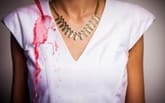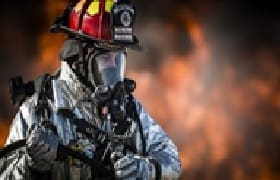Clothing has gone beyond our conventional protection, it is a fashion, it is a functional aspect, it is a brand promotion, it is weather sensitive, it is combination of various fibres – natural & synthetics, it can be collaboration of all physical as well as chemical properties, and even nowadays beauty of chemical technology is that all of such properties can be imparted to give more meaning to life of human beings.
Years have passed since when the basic necessity of clothing is been restricted only to protection from the climatic changes. The aesthetic appeal of garments has seen a tremendous demand thereby giving the best of the fashion with comfort for the skin garments. The pandemic, however, has opened up a new dimension to this basic protection feature of the garments it is because today the term protection is not only restricted to the climatic phenomenon but the viruses which were present for years in the atmosphere have suddenly entered the super important zone owing to rise of “COVID19”.
To enhance clothing properties & build in the efficiency factor various finishes have been surfaced on the clothing but all were limited to a certain specialty clothing series. For eg the heat retardant finishes to workwear, the perspiration finishes for breathability to the sportswear, etc. It is now that the finishes will start gaining their importance as the first line of defense acting as Shield armor against the invisible viruses. The importance of health & hygiene will act as a catalyst to boost the use of more advanced finishes on the majority of consumer-driven textiles from basic clothing to the home textiles & textiles in direct contact of humans.
Let us explore the various finishes already introduced & the impact of the current situation on them
1.Anti-Viral Finish:

Figure 1Visual representation, source internet
This finish reduces the viral activity morphologically. The name itself is enough for creating a wave of interest in people for clothes with such finishes. Currently, it is having a prime time market on various face shields in the market.
In April 2020 NICCA has confirmed the antiviral effect of the textiles processed with the antibacterial agent “NICCANON”. ). The fabric treated with “NICCANON” succeeded in reducing the number of viruses on the fabric for the same envelope type influenza virus as a coronavirus (COVID-19). A success breakthrough will see the majority of consumer-driven textiles implementing these finishes on garments, drapes & curtains, bedcovers filters, mops, etc.
Melbourne, Australia based HealthGuard Corporation claims that its HealthGuard AMIC/PLB anti-viral textile finish has been independently tested to be 99.9% effective against killing spores of Corona Virus (H1N1), SARS and Influenza Virus when applied correctly to fibers and fabrics
Indian Companies such as Donear Industries, Welspun India Ltd, RSWM Ltd (Mayur), Arvind Ltd, Vardhman Textiles, and D’ Decor, among others, have launched anti-viral fabrics for apparel and home furnishing products, in partnership with international textile technology players. And they don’t come cheap; they are priced about 15-20 percent higher than the average products. (Source-the Hindu business line)
2. Health Medical – Unconventional antimicrobials
Will ensure that microbial adoption is not occurring on finished textiles. The surfaces treated with this finish becomes inhibitory for the development of microbial reservoirs. Green silver particles are the future trend for this finish, they are ecofriendly & cost-effective with efficient bactericidal properties & low toxicity.
3.Water and Oil repellents

Figure 2: Oil repellant textile garment source internet
These are chemical finish. Resist the penetration of water into the fabric while allowing moisture or air passage. This finish is used in PPE, Tarpaulins, driver suits, umbrellas, swimming suits & Raincoats. Its use in PPE is more than sufficient to understand the demand for this finish.
The waterproof finish is slightly different from repellants. It forms a film on the surface of the fabric which prevents the permeability of water as well as air.
4.Insect Repellent:

This is the basic type of finish that will be especially looked out for in kid’s garments as the pandemic has surely created fear for “Fever & Flu”. So the parents will take all the efforts to keep away their kids from the mosquitoes. Post pandemic they will not be able to keep their kids away from the playground but clothes with the promising finish of mosquito repellent within pocket cost will surely be the one they would invest in.
Other finishes like cool finish-moisture management, soil repellent finishes will also be encouraged to be used in kid’s wear & sportswear.
5. Anti-allergic finish
This finish can be extracted from natural products having medicinal properties like Medicinal trees. Barks, stem, leaf, root & fruits are extracted for their medicinal properties thereby making this finishes to be skin-friendly. These finishes will be looked out for kids wear as well as for textile products used by the beauty-conscious population. The trends for clear & youth skin will drive the sector with the help of finishes like
- Aloe Vera Finish
This finish restores the natural balance of body & skin by acting as a moisturizer & a pain soother.
- Vitamin E Finish
It helps to hide visible aging signs, hydrates & moisturizes the skin. It also reduces sun damage along with the reduction in the appearance of scars.
6. Antifungal finish
Lockdown has affected almost everything. The object in complete lockdown are our highly fashionable clothes, office wears & party wears. All lying ideal in our wardrobes with many other unused clothes. Monsoons moisture & clothes in the wardrobe will lead to a catastrophic effect of fungal growth if not maintained properly. Thereby creating awareness for an antifungal finish on garments preventing microbe’s growth & the foul odor that garments catch on by just lying around.
7. Fragrance & Special Finishes

Figure 4: Fitness Enthusiast source internet
Health & Fitness are now going to see a more rapid pace of development. The unlock phase itself has seen the flooding of fitness enthusiasts in the common public places. The fragrance & special finishes on gym wears will ensure to build in De- odorizing technique providing a natural fragrance built-in garments extracted from essential oils -Flowers, Fruits, Essences with Aromatherapy Blends like Lavender, Alpine, etc
8. Thermal Insulator Finishes

Figure 5 Firefighter work suit (source: internet)
Special nanodispersions in binder produce heat-retaining effect leading to infrared radiation owing to its porosity. It also has a deodorant effect against basic gases like ammonia and trim ethyl amine. Heavy Industry work wears have these finishes. The stringent rules & regulations for productions post COVID19 will see a preferential demand for this product.
9. Antistatic
Carpets & synthetic textiles in office spaces & rooms with electronic devices i.e. covering all possible common areas today are prone to generate a static charge and in worst scenario lead to electric shocks. It also causes fabrics to “cling”, when two layers of clothing rub together, causing discomfort & attracts dust and lint. This is why antistatic finishes are most commonly used on home & kitchen textiles.
Summary:
There is a balance to be maintained between the processing of textiles & their impact on the environment. Introducing a finish to overcome one adversity should not lead to another adversity of the future. More & more innovations on the organic aspect is need of the hour. Promoting greener finishes & an overall appeal on the affordability will be the key driving factor for the growth of this sector. There is no doubt that adding finishes & improving the quality parameter will not be a costly affair. So here is where the measures of cost-cutting like bulk productions will come into play to make the finished product in the affordability range. It requires working together from all the segments of the value chain.
Textile finishes have overcome all deficiencies of fibres, fabrics and manufacturing processes and can apply even on garments to cut short the limitations. The world is changing towards green environment and so is our own finishing industry keeping pace with the environment!!!

By Avinash Mayekar, MD & CEO, Suvin Advisors Pvt. Ltd.

